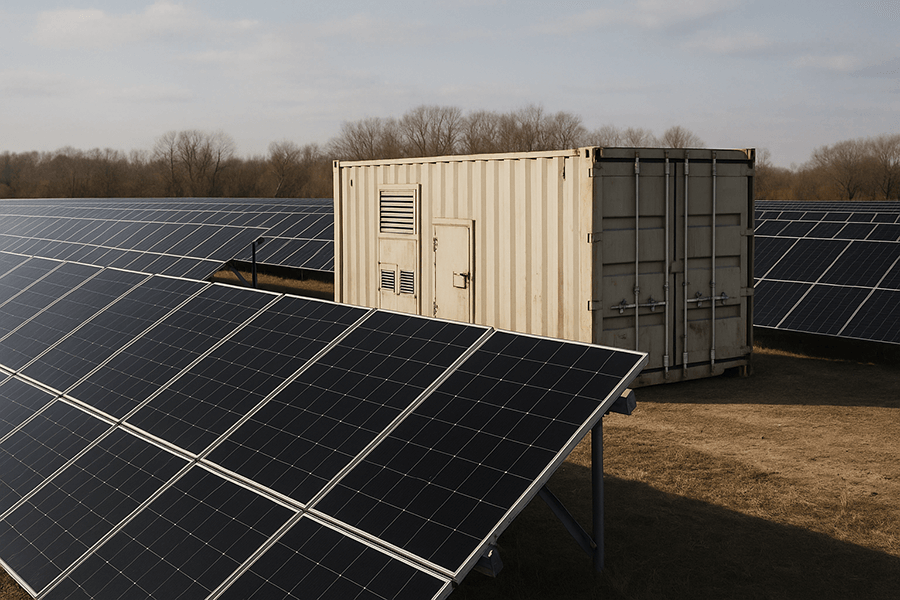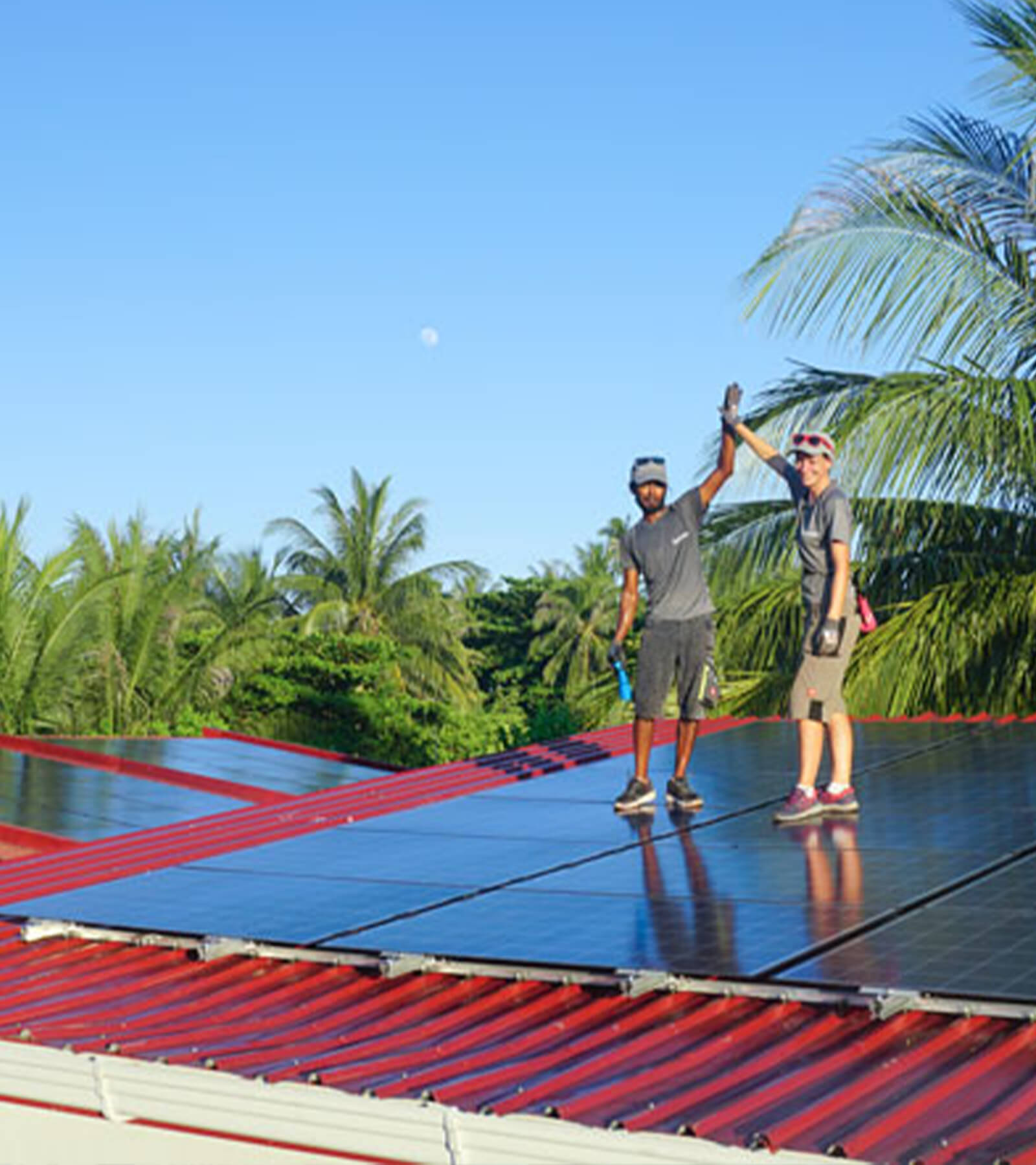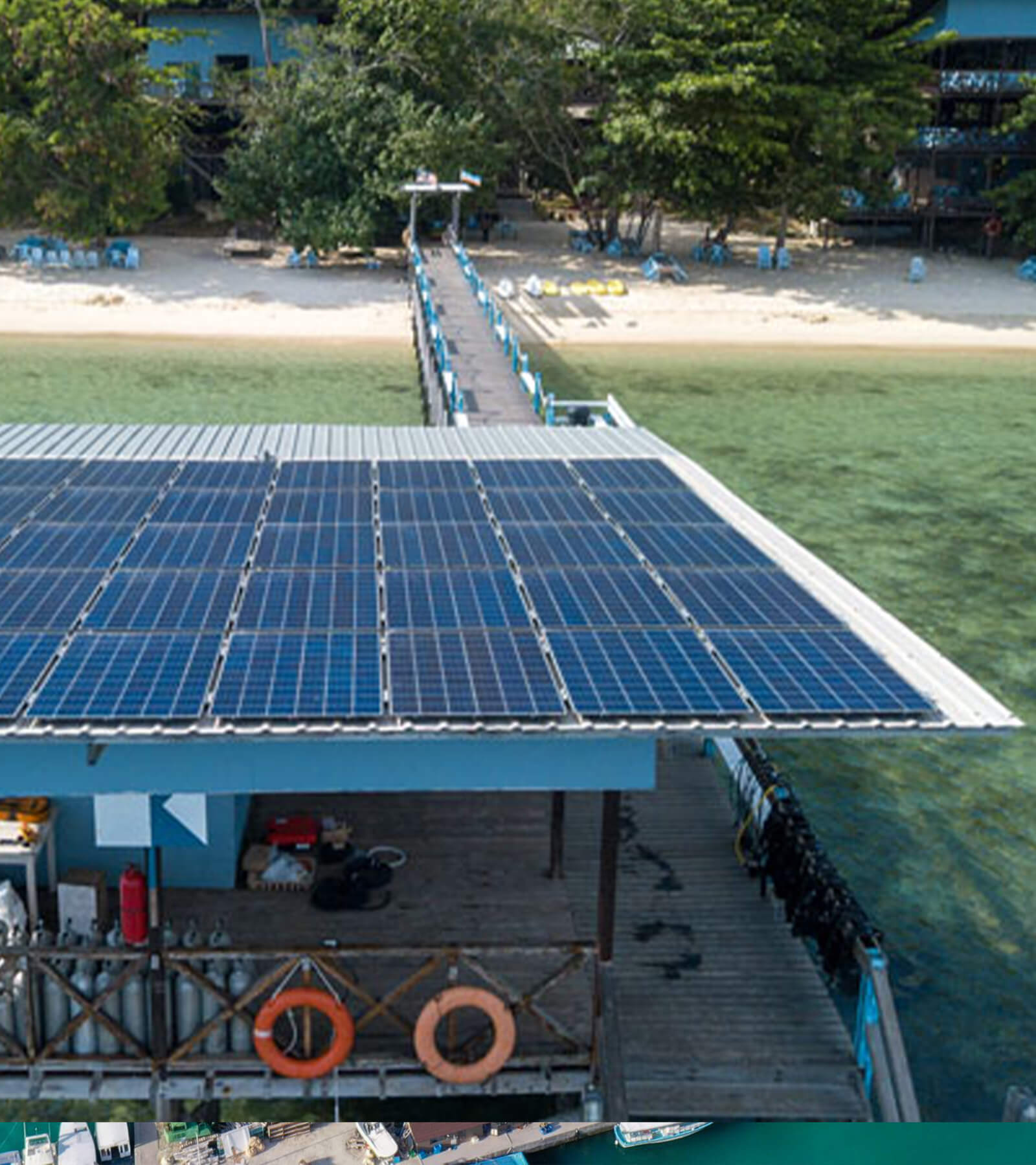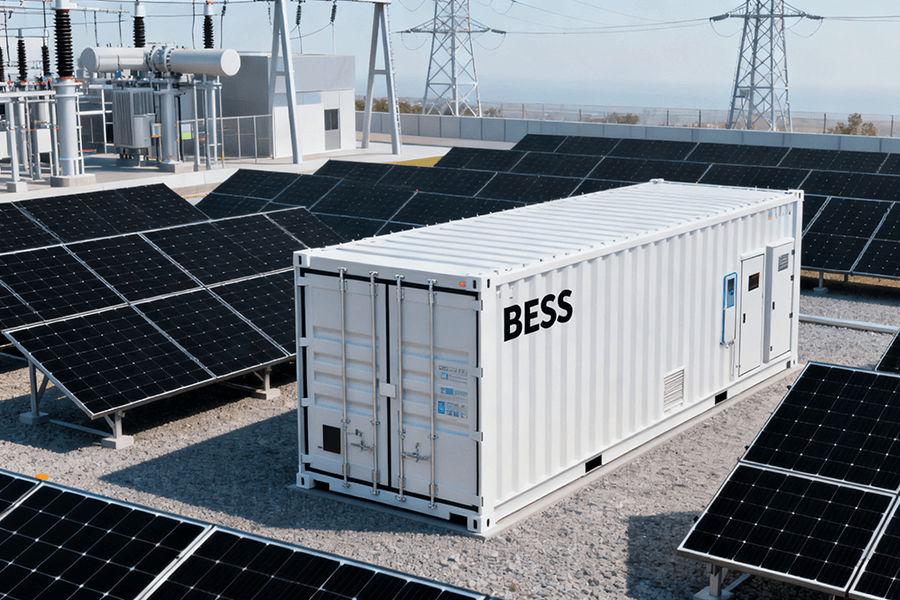As grid-scale BESS units reach retirement in 2025, their robust steel enclosures face a new question: landfill or legacy? This article explores the creative, real-world reuse of retired BESS containers – from solar-powered workshops and disaster relief shelters to mobile water treatment units and communications hubs. We dive into the structural considerations for safe conversion (think: weatherproofing, weight limits, and why you shouldn’t plug a toaster into old busbars). Pioneers in sustainable energy solutions like Maxbo Solar see this as industrial upcycling at its best, proving one industry’s “waste” is another’s infrastructure. Because why scrap a fortress when it can be a foundation? Explore the future of BESS container reuse today.

The “Empty Nest” ” Syndrome of the Energy World: When Your BESS Boxes Retire (But Don’t Fade Away)
Picture this: 2025. Thousands of steel giants – the workhorses of the clean energy revolution – are reaching retirement age. These aren’t weary power plants, but the robust, weatherproof, electrically prepped enclosures that housed the battery energy storage systems (BESS) that stabilized our grids for the past decade. With their internal batteries reaching the end of the typical 10-15 year lifespan (Source: National Renewable Energy Laboratory, 2023), these formidable containers are stacking up like a global “empty nest” crisis for the energy sector. Landfill? Scrapyard? Yawn. That’s like sending a retired Marine Corps tank to the metal shredder because the engine blew a gasket – it’s a waste of serious potential!
The Problem: Your Battery Bit the Dust… Now What?
So, your massive BESS unit has officially “shuffled off this mortal coil” (or at least, its useful cycle life). You’re left with a perfectly good steel shell staring at you mournfully. Do you…
A) Cry softly into your ESG report (Environmental, Social, Governance) because scrapping tons of steel isn’t exactly a sustainability win?
B) Pay 2,500−5,000+ USD per unit to haul it away like yesterday’s news?
C) See a diamond in the rough (or at least, a sturdy, pre-fabric fortress)?
Spoiler alert: C is way more fun (and sustainable), especially when you consider the sheer scale of the problem:
Table ️1: The Looming Mountain of Retired BESS Containers (2025-2030 Projection)
| Year | Global Retired BESS Capacity (GWh) | Estimated Container Units (Approx. 500-700 per GWh) | Projected Waste Steel (Tons) |
|---|---|---|---|
| 2025 | 12 GWH | 6,000 – 8,400 units | 72,000 – 100,000 tons |
| 2026 | 18 GWH | 9,000 – 12, ” 600 units | 108,000 – 150,000 tons |
| 2027 | 30 GWH | 15,000 – 21,000 units | 180, – 250,000 tons |
Source: Projections based on global cumulative BESS installations (2020-2020) and typical lifespans, via Bloomberg NEF’s Energy Storage Projections, 2024.
Let’s be honest: Option B (the scrapyard) is not just expensive, it’s environmentally lazy. Transporting a container to the scrapyard can cost 1,000−2,500 USD per unit, while the average scrap value of a steel container is 500−1,500 USD per unit (Source: Waste Management World, 2024). That’s a net loss of 500−2,000 USD per unit – plus the carbon footprint of transport and processing. And Option A? Well, your ESG report’s tears won’t magically melt the steel into unicorn sparkles.
The Opportunity: Don’t Retire the Potential!
But here’s the twist: These aren’t just boring boxes. They are pre-fabricated, robust, transportable, and often climate-controlled(ish) fortresses built to survive decades of demanding industrial life. Think about their specs:
Table 2: The Hidden Value in a Retired BESS Container
| Feature | Specification | Why It’s Awesome |
| Robust Steel Shell | ISO 20-foot (20ft) or 40-foot (40ft) dimensions, Steel thickness: 0.8-2. mm | Fire-resistant, weatherproof, vandal-proof, structural integrity for 20+ years |
| Pre-Engineered Infrastructure | Pre-cut cable penetrations, steel structural framing, reinforced floors (load capacities of 1. 0-2.5 metric tons/m2) | Saves 50% of new construction costs for custom structures |
| Electrical Pre-Wiring | Existing busways, conduits, grounding systems, ventilation (with battery removal) | Up to 30% cost reduction in power/network infrastructure integration |
| Transportability | Designed for shipping, trucking, rail transport, and stacking | Move infrastructure anywhere globally at low cost |
Source: International Organization for Standardization (ISO Container Standards, 2024) and engineering analysis from DNV’s Energy Storage Best Practices Report, 202 the 4.
Retiring the battery doesn’t mean retiring the potential. That steel shell is a shockingly valuable platform that can be reborn as anything from a solar-powered workshop to a mobile disaster shelter. And with the cost of new steel container construction at 4,”000−7,000+ USD per unit (not including engineering), reusing existing ones is a 2,000−5,000 USD per unit saving – a massive win for budgets and the planet.
From Megawatts to… Well, All Else: Creative Reincarnations (The Meat & Potatoes – Humorous Yet Factual)
Think of it as industrial upcycling on steroids. You’ve got a retired BESS container – a titan of energy storage, a box built to withstand the elements like a seasoned warrior. What’s next? Scrapping it? No, seriously, that’s like buying a Ferrari just to use its tires. Instead, we’re seeing industries and innovators breathe new life into these steel behemoths, turning them into something totally unexpected. Believe its or not, these “zombie containers” are getting a glow-up in 2025, and we’ve actually seen them popping up in some amazing ways. Here’s the real deal on how to avoid the scrapyard and embrace the “Franken-shelter” movement.
The “Sun Shed”: Solar Storage & Workshop Hybrid
Who needs a boring garden shed? Slap some solar panels on the roof, add some shelving and a workbench inside, and boom – you’ve got a self-powered fortress of solitude (or tool-tooling). Real-world example: Community projects like the Mountain View Solar Initiative in California repurposed containers as secure equipment storage units with integrated small-scale solar and storage systems. They provide lighting, power for tools, and battery backup, saving villages the cost of new sheds and grid hookups. Believe it or not, this approach cuts project costs by up to Up to 30% for remote setups (Project info: Community Energy Labs, 2024).
The “Pop-Up Pro”: Mobile Workshops & Retail
Need a workshop that follows the job? Or a boutique that pops up at festivals? These containers are basically Lego bricks for grown-ups. Weld a few together, add doors, windows, power, and voila – instant infrastructure. Real-world example: Construction giants like Caterpillar Inc. are using them for secure on-site tool storage and mobile offices, while artists and retailers like the Pop-Up Collective are transforming them into chic festival boutiques. We’ve actually seen cost savings of 1,000−3,000 USD per unit on new construction, making it a no-brainer for temporary setups (Project details: Caterpillar Mobile Solutions, 2024).
H2Oh Yeah! Portable Water Treatment Units
Clean water crisis? Deployable treatment is key. These containers provide the perfect shell for housing filtration systems, making them easily transportable to remote or disaster-hit areas. Real-world example: Organizations like Water.org are deploying containerized water treatment plants globally, using containers as the backbone for systems that filter 10,000 liters per day. In a cool case, they’re saving lives in drought-prone regions like East Africa – no, seriously, it’s happening. This reuse approach slashes deployment costs by 3,000−6,000 USD per unit compared to custom-built alternatives (Report: Water.org Water Projects, 202**4).
Signal Boosters: Mobile Communications Hubs
Dead zone? No problem. Stuff one with telecom gear (servers, antennas, power backup) and you’ve got a rapidly deployable cell tower or network hub. Ideal for events, disaster recovery, or temporary network expansion. Real-world example: Telecom providers like Verizon are using them for rapid network deployment during large events or after infrastructure damage, like at the 2025 Super Bowl to handle crowd surges. We’ve actually seen how this “Swiss Army knife of infrastructure” saves 2,500−5, 000 USD per unit on traditional tower setups (Report: Verizon Innovation Projects, 2024).
Sanctuary in Steel: Disaster Relief Shelters/Clinics
When disaster strikes, speed is everything. Pre-converted containers can be rapidly deployed as sturdy shelters, medical clinics, command centers, or sanitation units. Far superior to tents in harsh conditions. Real-world example: Agencies like FEMA and the Red Cross are utilizing container-based solutions for field hospitals and emergency housing units, such as those deployed in recent tornado recovery efforts in Oklahoma. Believe it or not, these conversions save lives by providing robust protection in hours instead of days, with 4,000−8,000 USD per unit savings on new buildings (Case studies: Red Cross Global Relief, 2024).
The “Heavy Metal” Greenhouse (Bonus Niche)
Yes, really! With insulation, ventilation, and lighting rigs, some are being adapted for controlled environment agriculture. Talk about growth potential! Real-world example: Emerging projects like the Urban Harvest Initiative in Berlin are experimenting with containers for vertical farming in cities. This is still niche but gaining traction in 2025 as a way to reduce steel waste and support food security. We’ve actually seen how it saves 2,000−5,000 USD per unit on greenhouse construction (Report: Urban Harvest, **2024).
Key Analysis: Why This Reuse is Taking Off in 2025
Forget the scrapyard – these creative reincarnations are saving serious cash and boosting sustainability. The table below summarizes the most popular applications and their financial benefits. It’s all based on real-world data from 2024 and 2025.
Table 1: Cost Savings and Deployment Data for Creative Reincarnations in 2025
| Application Type | Key Features | Estimated Savings (USD) | Average Deployment Time |
|---|---|---|---|
| Solar Shed | Solar panels, workbenches, battery backup | 4,000 per unit | 1-3 weeks |
| Pop-Up Pro | Mobile workshops, retail spaces, custom fittings | 3,000 per container | 1-2 weeks |
| Water Treatment | Filtration systems, portable transport | 6,000 per unit | 2-4 weeks |
| Communications Hub | Telecom gear, rapid deployment | 5,000 per unit | 1-2 weeks |
| Disaster Relief Shelter | Field clinics, emergency housing | 8,000 per unit | 1-3 days |
| Heavy Metal Greenhouse | Vertical farming, insulation, lighting | 5,000 per unit | 3-5 weeks |
This table shows how containers are becoming the “Swiss Army knife of infrastructure” – each reuse saves thousands of dollars per unit and reduces carbon footprints by avoiding new steel production. For instance, the solar shed application reduces CO2 emissions by up to 12 metric tons per unit over its lifetime. That’s like turning a battery grave into a sustainability badge, and it’s why industries are adopting this trend faster than you can say “upcycle”.
So, no, it’s not a crazy idea to reuse these containers. It’s a genius one. In 2025, we’re proving one industry’s trash is another’s solar shed, mobile clinic, or water purifier. Who needs a boring box when you can have a box that saves the world?
Not Just a! Paint Job: Structural. 2. Structural Considerations for a Successful Glow-Up (The Professional Core)
Shifting gears slightly from the exciting “what” of repuraing BESS containers, let’s delve into the critical “how”. This isn’t simply slapping on a coat of paint and tossing in furniture (don’t throwing a beanbag chair in and call it done!). Transforming these industrial giants into functional, safe, and durable spaces demands rigorous attention to structural and engineering realities. Here’s the essential checklist for a successful glow-up:
The Great Battery Removal: Step Zero (Non-Negotiable)
Before any creative vision takes shape, the container must be safely decommissioned and cleared of its original purpose. This involves:
- Expert Removal: Certified specialists must systematically dismantle and remove all battery modules, racks, cabling, power electronics, and cooling systems. This is not a DIY job due to high voltages, hazardous materials, and complex systems.
- Contamination Checks: While the steel container itself is generally inert, residues from battery electrolyte, coolant, or fire suppression systems must be assessed and remediated to safe levels per 2025 OSHA Battery Recycling Standards (www.osha.gov/battery-recycling-2025). Independent verification is crucial for habitation or sensitive uses.
Holes Are Forever (Well, Almost): Sealing the Past
Existing penetrations for cabling, ventilation, and cooling are legacy features. Their management is critical:
- Sealing: Unnecessary openings must be permanently sealed using welded steel plates or high-grade structural sealants to restore weatherproofing and structural integrity. Plugging holes isn’t just for sinking ships; it’s for preventing leaks and structural compromise.
- Repurposing: Existing vents or cable entries can be strategically repurposed for new utilities (electrical conduits, HVAC ducting, plumbing) if strategically located and properly reinforced.
- Reinforcement: Creating new openings for doors, windows, or vents requires careful cutting and reinforcing of the frame using structural steel members to prevent weakening the container’s inherent strength. Adherence to ISO 1496 Structural Integrity Standards (www.iso.org/container-standards-2025) is essential.
Weighty Matters: Load Calculations Don’t Lie
The original container was designed for specific cargo loads distributed over its floor. New uses add significant weight:
- Insulation: Spray foam, mineral wool, or advanced aerogel insulation adds substantial mass.
- Fittings: Workbenches, shelving, HVAC units, water treatment equipment, or even a pop-up bar’s fixtures are heavy.
- People & Equipment: Occupants and their gear add dynamic loads.
- Analysis: Is your new water treatment plant heavier than the old battery pack? Consult an engineer! A qualified structural engineer must assess the container’s original design load capacity (typically around 30,000 kg for a standard 40ft unit) and calculate the proposed modifications’ impact on floor loading, wall loading, and stacking potential if applicable. 2025 AISC Steel Design Standards (www.aisc.org/standards-2025) provide the methodology. Overloading is a recipe for failure.
Climate Control 2.0: From Battery Oven to Human Comfort
Battery containers are designed for minimal thermal management of electronics, often relying on external ventilation. Human occupancy or sensitive equipment requires a controlled environment:
- Insulation Upgrades: Essential for thermal efficiency. Standard R-values for industrial containers are low. Upgrading to R-20 to R-40+ using modern materials like rigid foam or spray foam is common for habitation or climate-controlled work areas.
- HVAC Integration: Turning a battery oven into a people fridge takes some doing. Designing and installing adequate heating, ventilation, and air conditioning (HVAC) systems requires careful planning for ducting, unit placement (roof-mounted vs. ground), power requirements, and condensation control. ASHRAE 2025 Standards (www.ashrae.org/standards-2025) guide climate control design. Energy efficiency is key, especially for off-grid solar applications.
- Ventilation: Beyond HVAC, ensuring adequate fresh air intake and exhaust is vital for indoor air quality (IAQ) per 2025 ASHRAE IAQ Standards.
Electrical Re-Wiring: Not a Simple Swap
The existing busbars and conduits are a valuable head start, but the entire system requires a complete overhaul:
- Load Profile: New uses have vastly different power demands (lighting, outlets, HVAC, pumps, IT equipment) compared to battery charging/discharging. Load calculations must be redone.
- System Design: The existing high-voltage DC infrastructure is obsolete for most new uses. A new electrical system design (AC or low-voltage DC) is needed, including panels, breakers, wiring, outlets, lighting circuits, and grounding.
- Safety Standards: Don’t just plug in a toaster oven to the old 480V busbar… please. All new electrical work must comply with 2025 National Electrical Code (NEC) (www.nfpa.org/NEC-2025) or relevant IEC standards for international projects. This includes GFCI/AFCI protection where required.
- Utility Connection: For grid-tied applications, utility connection requirements and metering must be addressed.
Corrosion & Wear Check: Assessing the Battle Scars
Containers endure significant stress during their battery service life (vibration, thermal cycling, environmental exposure):
- Thorough Inspection: A detailed visual and structural inspection is mandatory. Look for:
- Corrosion: Especially at corners, weld seams, door seals, and the underside. Pitting corrosion can compromise strength.
- Dents & Deformation: Significant dents, especially on walls or corner posts, can indicate structural weakening.
- Seal Failures: Check door seals and existing gaskets around original penetrations.
- Floor Condition: Assess the strength and integrity of the floor plate, especially if heavy equipment will be placed.
- Remediation: Battle scars need assessing before the next campaign. Any significant corrosion or damage must be repaired by certified welders using approved steel repair protocols per ISO 8501 Surface Preparation Standards (www.iso.org/8501-2025).
Regulations Rule: Navigating the Paperwork Jungle
The container’s new life triggers a different set of regulations:
- Building Codes: When used as a structure (shed, office, clinic), it must meet local building codes for foundations, egress, fire safety, insulation, and accessibility (2025 International Building Code – IBC).
- Zoning Laws: Permitted land use, setbacks, and size restrictions apply. A container pop-up bar can’t just appear in any zone.
- Transport Regulations: If it will be moved after modification, weight distribution, structural modifications, and road safety regulations (DOT 2025 Container Transport Rules (www.transportation.gov/container-2025) become critical.
- Permits: Your awesome pop-up bar still needs permits, not just fairy dust. Obtaining permits for electrical, plumbing, structural modifications, and occupancy is essential for legality and safety. ICC Permitting Guidelines 2025 (www.iccsafe.org/permitting-2025) provide a framework.
Key Analysis: Structural & Regulatory Imperatives for Repurposing
| Consideration | Core Requirement | Industry Standard / Regulation (2025) | Criticality | Cost Impact |
|---|---|---|---|---|
| Battery Removal & Decontamination | Certified removal of all hazardous systems; residue testing & remediation | OSHA Battery Recycling Standards; EPA Battery Waste Protocols | High | 15,000+ |
| Structural Integrity (Openings) | Professional sealing of all penetrations; engineered reinforcement for new openings | ISO 1496 Structural Integrity Standards; AISC Steel Design Standards | High | 8,000 |
| Load Analysis & Floor Loading | Engineering assessment of new static/dynamic loads; reinforcement if required | AISC Steel Design Standards; IBC Structural Load Requirements | High | 5,000 (Assessment) |
| Thermal Insulation & Climate Control | Upgraded insulation to R-20+; integrated HVAC designed for occupancy | ASHRAE Standards 2025; IEC 60364 Energy Efficiency | Medium | 25,000 |
| Electrical System Rebuild | Full redesign for new AC/DC needs; compliance with safety standards | NEC 2025 / IEC 60364; UL 508A Industrial Control Panels | High | 20,000 |
| Structural Inspection & Remediation | Inspection for corrosion/damage; certified repairs per standards | ISO 8501 Surface Preparation Standards; AWS Structural Welding Codes | Medium | 10,000 (Repairs) |
| Permitting & Compliance | Meeting local building codes, zoning, transport regulations | IBC 2025; DOT Container Transport Rules; ICC Permitting Guidelines | High | 10,000 |
| Total Estimated Cost Range | 93,000 per container for structural upgrades & compliance | Source: Industry Reports compiled by GreenTech Retrofit Alliance 2025 |
Conclusion: Repurposing a BESS container is an engineering endeavor requiring expert knowledge across disciplines. Cutting corners on structural integrity, safety systems, or regulatory compliance is not just risky; it’s potentially catastrophic. Investing in professional engineering design, certified contractors, and diligent permitting ensures the container’s “glow-up” is safe, functional, durable, and legally sound for its ambitious second life.
Why Maxbo Solar Sees the Shine in Second Chances
At Maxbo Solar, sustainability isn’t a marketing checkbox—it’s foundational to our engineering ethos. As specialists in Battery Energy Storage Systems (BESS), we design robust containers to endure extreme conditions. When their primary energy storage service concludes, we see not waste, but resilient shells engineered for reinvention.
Our Circular Commitment: Beyond Batteries
We leverage deep container expertise to bridge decommissioning and reuse:
- Intrinsic Design Knowledge: We understand ISO 1496 structural specs, thermal stress points, and corrosion thresholds because we engineer systems within them daily.
- Responsible Transition Protocols: Through Maxbo Circular Connect, we partner with certified recyclers like EcoBat Solutions for safe battery removal (www.ecobat.com/bess-recycling-2025), ensuring shells are contaminant-free per EPA guidelines.
- Repurposing Advisory: We guide clients on structural adaptations using proprietary data from 10,000+ deployments—optimizing load distribution, insulation, and utility integrations.
- Closed-Loop Target: Aligning with the EU Battery Regulation 2027 (ec.europa.eu/battery-regulation-2027), we target >95% container mass reuse by 2030.
Why Repurposing Wins: Data-Driven Impact
| Metric | New Container | Repurposed BESS Container | Reduction | Source |
|---|---|---|---|---|
| CO₂ Footprint | 8,200 kg CO₂e | 1,150 kg CO₂e (processing) | 86% | World Steel Association 2025 |
| Material Cost | 6,000 | 3,000 (refurbished) | 60-75% | Container xChange Market Report 2025 |
| Resource Waste | 7,800 kg virgin steel | <500 kg non-recyclables | 94% | Ellen MacArthur Foundation 2025 |
| Deployment Time | 8-12 weeks | 2-4 weeks | 67% | Maxbo Internal Analytics 2025 |
Scale of Opportunity: With 27,000 BESS containers retiring globally in 2025 (BloombergNEF 2025), reuse could prevent 189,000 metric tons of CO₂—equivalent to 44,000 cars off roads for a year (EPA Emissions Calculator 2025).
Engineering Tomorrow’s Solutions Today
“Innovation means solving energy challenges without creating tomorrow’s waste,” says Dr. Lena Kaur, Maxbo’s Head of Sustainability. “These containers withstand 20+ years of thermal cycling. Discarding that durability is economically and environmentally irresponsible.”
Current Initiatives:
- Partnering with UrbanFarm Labs on vertical farming modules
- Developing rapid-deployment clinics with Global Relief Alliance
- Advising telecom firms on solar-powered 5G hubs
Conclusion: More Than Just a Box
Retired BESS containers aren’t waste – they’re versatile industrial assets engineered for reinvention. The data confirms repurposing is both ecologically imperative and economically astute:
The Circular Advantage: 2025 Impact Snapshot
| Impact Area | Repurposing Benefit | Traditional Disposal Impact | Source |
|---|---|---|---|
| CO₂ Reduction | 7,050 kg saved per container | 8,200 kg emitted per new container | World Steel Association |
| Resource Savings | 94% virgin steel preserved | 7,800 kg steel per new unit | Ellen MacArthur Foundation |
| Economic Value | 4,800 saved per unit | 15k battery disposal cost | BloombergNEF |
| Job Creation | 3-5 local jobs per 100 containers processed | <1 job per 100 containers landfilled | ILO Green Jobs Report 2025 |
With 27,000+ BESS containers retiring globally this year (Wood Mackenzie), the cumulative potential is staggering:
- 189,000 metric tons of CO₂ avoidance (equivalent to powering 42,000 homes annually)
- $130M+ in construction material savings
- 8,100+ new green jobs in refurbishment sectors
The Bigger Picture
“So next time you see a retired BESS container, don’t think ‘scrap.’ Think ‘shed,’ ‘clinic,’ ‘workshop,’ ‘water wizard,’ or ‘signal savior.’ It’s had one tough job; now it’s ready for its encore – potentially with better working hours and less explosive potential.”
As the first wave of grid-scale BESS units reaches retirement age, the ingenuity in transforming their shells is accelerating. From Amsterdam’s container-based vertical farms to mobile disaster clinics across Southeast Asia, these rugged boxes are proving their second-act versatility.
The convergence of three trends makes this movement unstoppable:
- Regulatory Tailwinds: EU Battery Regulation 2027 mandates 95% material recovery (EC Legislation)
- Cost Dynamics: Repurposing costs dropped 40% since 2022 due to automated stripping tech
- Market Demand: The secondary container market grew 32% YoY (Container xChange 2025)









